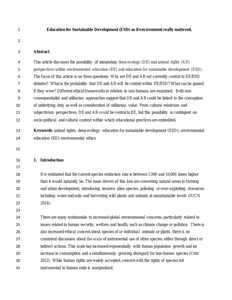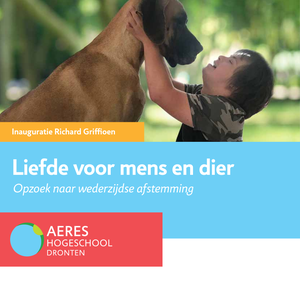Control methods are applied worldwide to reduce predation on livestock by European red foxes (Vulpes vulpes). Lethal methods can inflict suffering; however, moral debate about their use is lacking. Non-lethal methods can also inflict suffering and can unintentionally lead to death, and yet both the welfare consequences and ethical perspectives regarding their use are rarely discussed. The aim of this study was to investigate the animal welfare consequences, the level of humaneness, the ethical considerations and the moral implications of the global use of fox control methods according to Tom Regan’s animal rights view and Peter Singer’s utilitarian view. According to Regan, foxes ought not to be controlled by either lethal or potentially harmful non-lethal methods because this violates the right of foxes not to be harmed or killed. According to Singer, if an action maximises happiness or the satisfaction of preferences over unhappiness or suffering, then the action is justified. Therefore, if and only if the use of fox control methods can prevent suffering and death in livestock in a manner that outweighs comparable suffering and death in foxes is one morally obligated t
MULTIFILE

The search for existing non-animal alternative methods for use in experiments is currently challenging because of the lack of both comprehensive structured databases and balanced keyword-based search strategies to mine unstructured textual databases. In this paper we describe 3Ranker, which is a fast, keyword-independent algorithm for finding non-animal alternative methods for use in biomedical research. The 3Ranker algorithm was created by using a machine learning approach, consisting of a Random Forest model built on a dataset of 35 million abstracts and constructed with weak supervision, followed by iterative model improvement with expert curated data. We found a satisfactory trade-off between sensitivity and specificity, with Area Under the Curve (AUC) values ranging from 0.85-0.95. Trials showed that the AI-based classifier was able to identify articles that describe potential alternatives to animal use, among the thousands of articles returned by generic PubMed queries on dermatitis and Parkinson's disease. Application of the classification models on time series data showed the earlier implementation and acceptance of Three Rs principles in the area of cosmetics and skin research, as compared to the area of neurodegenerative disease research. The 3Ranker algorithm is freely available at www.open3r.org; the future goal is to expand this framework to cover multiple research domains and to enable its broad use by researchers, policymakers, funders and ethical review boards, in order to promote the replacement of animal use in research wherever possible.
DOCUMENT
This article focuses on the role of ethical perspectives such as deep ecology and animal rights in relation to environmental education, arguing that such perspectives are well-placed to reposition students as responsible planetary citizens. We focus on the linkage between non-consequentialism, animal rights, and deep ecology in an educational context and discuss the broader issue of ethics in education. Finally, we discuss how the inclusion of deep ecology and animal rights perspectives would improve current environmental education programs by deepening the respect for nonhumans and their inclusion in the ethical community. https://www.linkedin.com/in/helenkopnina/
DOCUMENT

The first Stakeholder Network Meeting of the EU Horizon 2020-funded ONTOX project was held on 13-14 March 2023, in Brussels, Belgium. The discussion centred around identifying specific challenges, barriers and drivers in relation to the implementation of non-animal new approach methodologies (NAMs) and probabilistic risk assessment (PRA), in order to help address the issues and rank them according to their associated level of difficulty. ONTOX aims to advance the assessment of chemical risk to humans, without the use of animal testing, by developing non-animal NAMs and PRA in line with 21st century toxicity testing principles. Stakeholder groups (regulatory authorities, companies, academia, non-governmental organisations) were identified and invited to participate in a meeting and a survey, by which their current position in relation to the implementation of NAMs and PRA was ascertained, as well as specific challenges and drivers highlighted. The survey analysis revealed areas of agreement and disagreement among stakeholders on topics such as capacity building, sustainability, regulatory acceptance, validation of adverse outcome pathways, acceptance of artificial intelligence (AI) in risk assessment, and guaranteeing consumer safety. The stakeholder network meeting resulted in the identification of barriers, drivers and specific challenges that need to be addressed. Breakout groups discussed topics such as hazard versus risk assessment, future reliance on AI and machine learning, regulatory requirements for industry and sustainability of the ONTOX Hub platform. The outputs from these discussions provided insights for overcoming barriers and leveraging drivers for implementing NAMs and PRA. It was concluded that there is a continued need for stakeholder engagement, including the organisation of a 'hackathon' to tackle challenges, to ensure the successful implementation of NAMs and PRA in chemical risk assessment.
LINK
This article examines two areas of tension within environmental ethics literature and relates them to the case study of the animal representation in the Dutch media. On the one hand, there is a tension between those who propagate clear division between anthropocentric and non-anthropocentric views; on the other hand, there is a tension between the land ethics perspective and animal right proponents. This article examines the media representation of animals using content analysis, and links the findings back to the areas of tension within environmental ethics. The main findings indicate that the division between anthropocentric and ecocentric perspectives is still relevant for evaluating the human-animal relations, while the convergence of the land ethics and animal rights perspectives can be helpful in explaining why this division is relevant. This is a post-peer-review, pre-copyedit version of an article published in "Environmental Processes".The final authenticated version is available online at: https://doi.org/10.1007/s40710-014-0025-7 https://www.linkedin.com/in/helenkopnina/
MULTIFILE

Despite changing attitudes towards animal testing and current legislation to protect experimental animals, the rate of animal experiments seems to have changed little in recent years. On May 15–16, 2013, the In Vitro Testing Industrial Platform (IVTIP) held an open meeting to discuss the state of the art in alternative methods, how companies have, can, and will need to adapt and what drives and hinders regulatory acceptance and use. Several key messages arose from the meeting. First, industry and regulatory bodies should not wait for complete suites of alternative tests to become available, but should begin working with methods available right now (e.g., mining of existing animal data to direct future studies, implementation of alternative tests wherever scientifically valid rather than continuing to rely on animal tests) in non-animal and animal integrated strategies to reduce the numbers of animals tested. Sharing of information (communication), harmonization and standardization (coordination), commitment and collaboration are all required to improve the quality and speed of validation, acceptance, and implementation of tests. Finally, we consider how alternative methods can be used in research and development before formal implementation in regulations. Here we present the conclusions on what can be done already and suggest some solutions and strategies for the future.
DOCUMENT

This article explores cooperation between a commercial supermarket chain and an environmental non-governmental organization linking it to consumer perception of the “The Super Animals” collectable cards promotion initiative. The case study focuses on one particular joint project involving Animal Cards that was initiated by the supermarket Albert Heijn and the World Wide Fund for Nature in The Netherlands. Based on this case, environmental non-governmental organizations’ strategic choices in the context of contesting discourses of sustainability and consumption, as well as implications for environmental education, are addressed. This article combines three strands of the literature – on sustainable consumption, on strategic cooperation between commercial companies and environmental non-governmental organizations and on environmental education. It is argued that the Animal Cards initiative presents an ambiguous case by both attempting to enhance environmental awareness and promoting consumption, opening up questions about the value of such cooperative ventures to the objectives of environmental education. It is concluded that cross-sector partnerships have the potential to lead to improvements in corporate social responsibility and environmental awareness among consumers but simultaneously pose the danger of undermining the critical stance toward consumption. https://doi.org/10.1177/1469540514556170 LinkedIn: https://www.linkedin.com/in/helenkopnina/
MULTIFILE

This article discusses the possibility of integrating deep ecology (DE) and animal rights (AR) perspectives within environmental education (EE) and education for sustainable development (ESD). The focus of this article is on three questions: why are DE and AR not currently central to EE/ESD debates? What is the probability that DE and AR will be central within EE/ESD? What can be gained if they were? Different ethical frameworks in relation to non-humans are examined. Both non-consequentialist and utilitarian approaches suggest that DE and AR could be linked to the conception of underlying duty as well as consideration of utilitarian value. From cultural relativism and subjectivism perspectives, DE and AR could be central to EE, but this possibility is contingent on socio-political and cultural context within which educational practices are embedded. https://doi.org/10.1016/j.envdev.2014.09.001 https://www.linkedin.com/in/helenkopnina/
MULTIFILE

Implementation of reliable methodologies allowing Reduction, Refinement, and Replacement (3Rs) of animal testing is a process that takes several decades and is still not complete. Reliable methods are essential for regulatory hazard assessment of chemicals where differences in test protocol can influence the test outcomes and thus affect the confidence in the predictive value of the organisms used as an alternative for mammals. Although test guidelines are common for mammalian studies, they are scarce for non-vertebrate organisms that would allow for the 3Rs of animal testing. Here, we present a set of 30 reporting criteria as the basis for such a guideline for Developmental and Reproductive Toxicology (DART) testing in the nematode Caenorhabditis elegans. Small organisms like C. elegans are upcoming in new approach methodologies for hazard assessment; thus, reliable and robust test protocols are urgently needed. A literature assessment of the fulfilment of the reporting criteria demonstrates that although studies describe methodological details, essential information such as compound purity and lot/batch number or type of container is often not reported. The formulated set of reporting criteria for C. elegans testing can be used by (i) researchers to describe essential experimental details (ii) data scientists that aggregate information to assess data quality and include data in aggregated databases (iii) regulators to assess study data for inclusion in regulatory hazard assessment of chemicals.
DOCUMENT

Dit boekje is uitgegeven in het kader van de inaugurele rede van Richard Griffioen, lector Animal Assisted Interventions (AAI). De inhoud van het lectoraat is zeer divers en richt zich op de impact van AAI (in de zorg) op het welzijn van mens en dier en het beïnvloeden van de mindset in de maatschappij. Het One Health concept, waarin het welzijn van de mens én het dier hand in hand gaan, speelt hierbij een belangrijke rol. Het lectoraat richt zich ook op nieuwe technologieën zoals virtual reality en robotica toepassingen. Het doel is om programma’s te ontwikkelen die zich richten op de hond, boerderijdieren en paarden.
DOCUMENT
